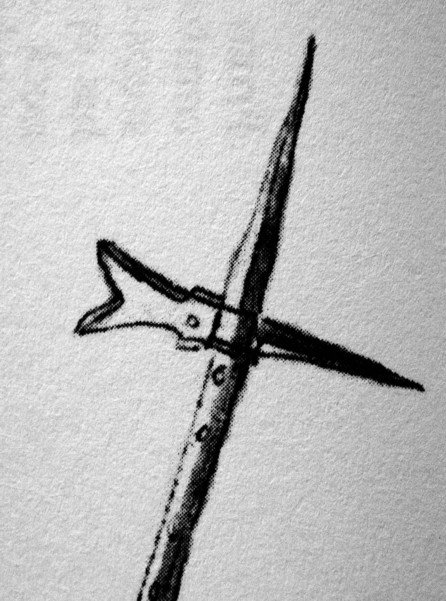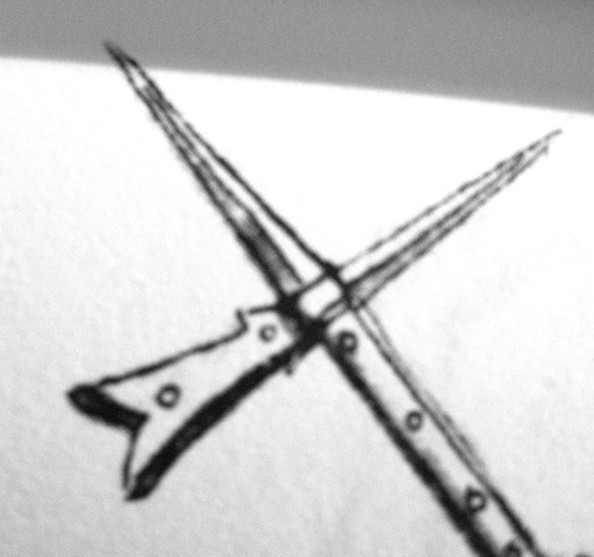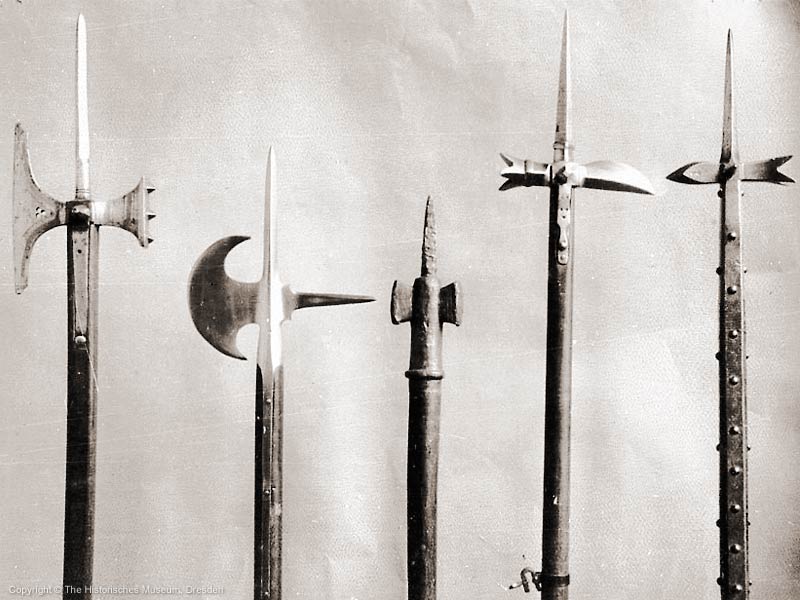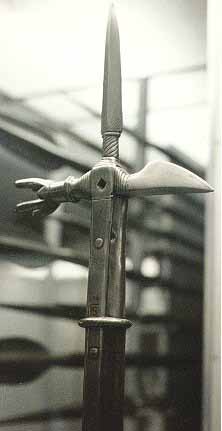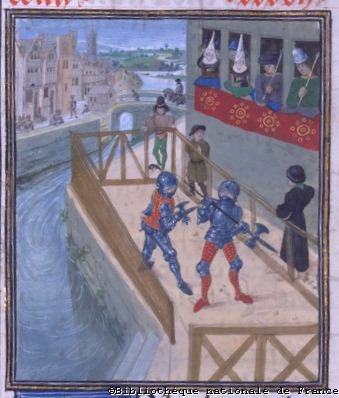I'm curious to know if there are any surviving examples of pollaxes similar to those depicted in Talhoffer? I've looked through the pollaxe article and historical weapons album but there is nothing that quite matches.
I've included some pics of the pollaxe heads that i'm particularly interested in from the mark rector talhoffer. There are a wide range of rather exotic pollaxe and polearm designs in talhoffer, some seemingly less plausible than others.
Is it likely that the pollaxe depicted in talhoffer was an actual historical weapon know to the illustrator or was it "artistic license" and not meant to represent any particular weapon, but a "generic" pollaxe? Is it possible that the style of pollaxe depicted was reserved for judicial combat or dueling; a specialised item only used for a specific purpose, like the dueling shields?
Does the pollaxe depicted in talhoffer appear to be a practical and effective weapon? If it was likely to be a historical weapon would anyone care to attempt a plausible graphic reconstruction (i'm somewhat graphically challenged)?
Christopher
